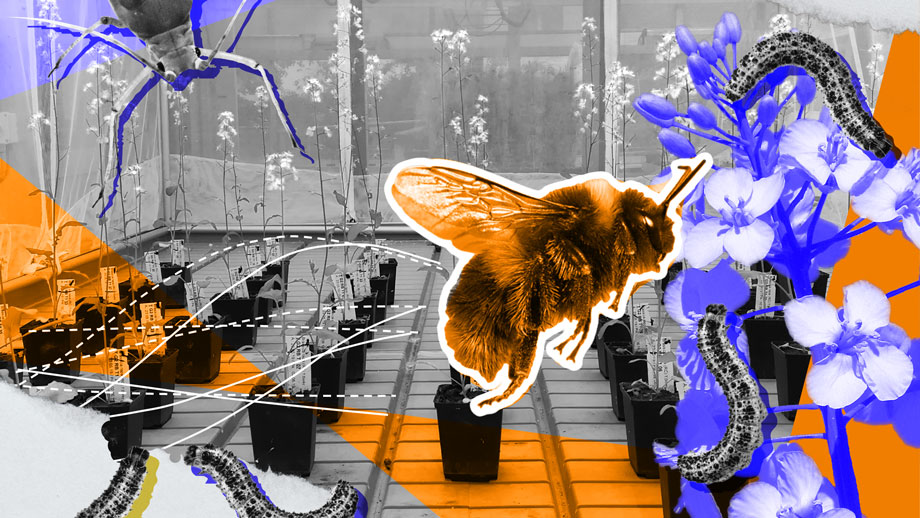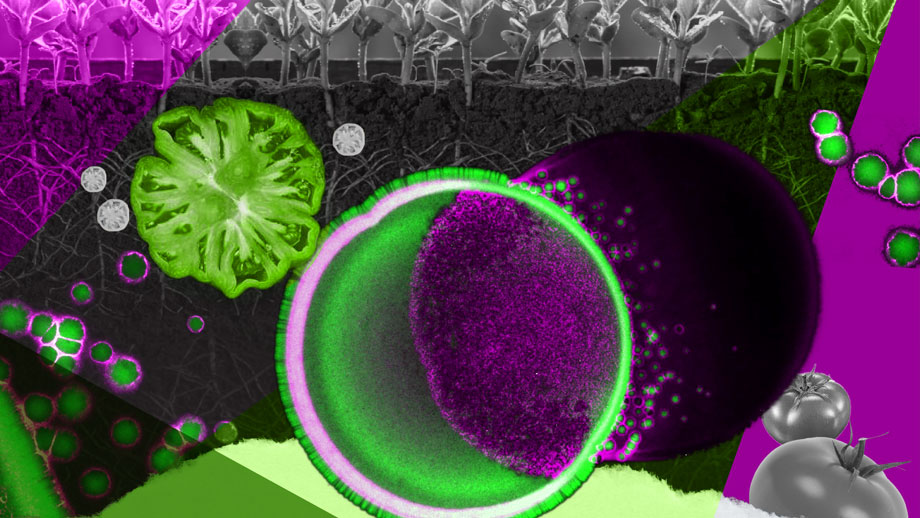Navigation auf uzh.ch
Navigation auf uzh.ch

Plants are fundamental to life on our planet and have a profound impact on our lives. The discipline of plant sciences researches the effect of plants on our nutrition, health and environment, for example through agriculture, medicine, biodiversity and ecosystems. Plant sciences research is a driving force toward a healthier and more sustainable future. In the last 25 years there have been many groundbreaking discoveries in plant sciences – from genetics to soil ecology. In addition, technological developments such as genome sequencing and imaging tools have changed the field dramatically. Here, we summarize five examples of developments over the last 25 years.
Advances in genetic engineering and genome analysis have revolutionized the breeding of crops. Thanks to molecular biology and sophisticated cultivation methods, crops have been modified to be more resistant to pests and diseases, to produce higher yields and to contain more nutrients. For example, it has become possible to breed plants that are particularly rich in protein and therefore offer an alternative to meat. That makes good ecological sense and also contributes to food security.
Plants are valuable sources for the pharmaceutical compounds that serve as the basis for drugs. One example is the cancer treatment Paclitaxel (Taxol). It was discovered in 1996 at the Research Triangle Institute in North Carolina, USA. Many plant-based remedies originate in indigenous communities and their mechanisms of action have not yet been extensively researched. A new SNSF research project at the Department of Systematic and Evolutionary Botany at UZH is investigating and documenting local knowledge and cultural practices around the use of medicinal plants in Uganda and Switzerland. The aim of the project, led by Caroline Weckerle, is to improve cultivation and protection of medicinal plants.

Plant scientists are researching the interactions between plants and microbes in order to improve soil fertility and reduce the need for fertilizers. Plants are also used to reduce environmental pollution and clean contaminated sites (phytoremediation). Leo Eberl’s research group at the Department of Plant and Microbial Biology has discovered a bacterial strain in soil that protects tomato plants from diseases. These bacteria can penetrate the natural biotic protective layer that forms as a biofilm around plant roots and establish a stable colony. This is relevant for the use of microbes as biofertilizers, as added bacterial strains are often eliminated by the naturally occurring bacteria.
The discipline of plant sciences has led to an increase in knowledge about ecosystems and biodiversity. Nowadays, AI-assisted models can predict how climate change or altered land use will affect ecosystems and biodiversity. This knowledge is crucial for combating climate change, as plants play a key role in sequestering carbon and regulating the climate. To date, there are around 400,000 known plant species. Another 2,000 are discovered every year. Every plant interacts with other organisms and forms complex relationships such as pollination, dispersal and nutrient uptake, which determine the health and survival of plants. With the help of modern sequencing methods, many thousands of bacterial and fungal species can now be identified. Nevertheless, the study of plant microbiomes, not to mention the multitude of viruses that interact with their host plants in a variety of ways, is still in its infancy. Such information is invaluable in managing problems caused by emerging pests and diseases or by introduced and invasive species.
The adaptive ability and the evolution of plants is a fascinating area of study. One noteworthy example is the relationship between flowering plants and pollinators. Flowering plants develop various mechanisms to attract pollinators such as bees, butterflies and birds. At the same time, pollinators develop special behaviors and tools to efficiently access nectar or pollen.
This complex dance of adaptation and selection has led to the incredible variety of flower structures, colors and fragrances seen in the world of plants. Plant sciences help us understand how natural selection, genetic variation and adaptation work within plant populations. This in turn helps us understand the processes that contribute to biodiversity and ecosystems.
Florian Schiestl’s research group at the Department of Systematic and Evolutionary Botany discovered that depending on the soil type, the appearance and fragrance of flowers changes, meaning the number of visits by bees also changes. This is mainly relevant for the evolution of the plants, because it leads to the emergence of new ecotypes.